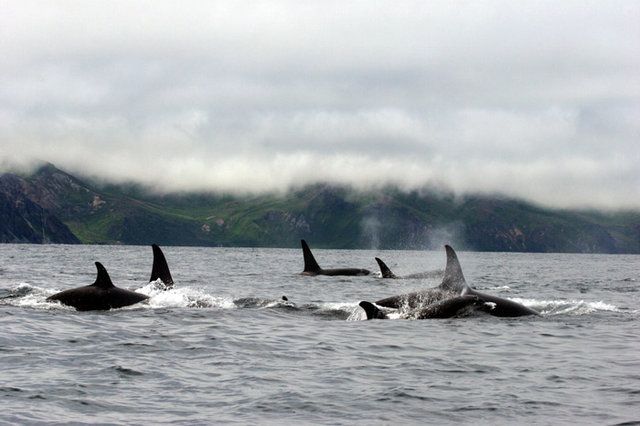|
|
Orca Whale
|
Like other animals at the highest trophic levels, the killer whale is particularly at risk of poisoning from accumulation of toxins, including polychlorinated biphenyls (PCBs). European Harbour seals have problems in reproductive and immune functions associated with high levels of PCBs and related contaminants, and a survey off the Washington coast found that PCB levels in killer whales were higher than levels that had caused health problems in harbour seals. Blubber samples in the Norwegian Arctic show higher levels of PCBs, pesticides and brominated flame-retardants than in polar bears. When food is scarce, killer whales metabolize blubber for energy, which increases pollutant concentrations.
In the Pacific Northwest, wild salmon stocks, a main resident food source, have declined dramatically in recent years. On the west coast of Alaska and the Aleutian Islands, seal and sea lion populations have also substantially declined.
In 2005, the United States government listed the southern resident community as an endangered population under the Endangered Species Act. The southern resident community comprises three pods which live mostly in the Georgia and Haro Straits and Puget Sound in British Columbia and Washington. They do not breed outside of their community, which was once estimated at around 200 animals and later shrank to around 90. In October 2008, the annual survey revealed that seven were missing and presumed dead, reducing the count to 83. This is potentially the largest decline in the population in the past ten years. These deaths can be attributed to declines in chinook salmon.
Noise from shipping, drilling, and other human activities is a significant concern in some key killer whale habitats, including Johnstone Strait and Haro Strait. In the mid-1990s, loud underwater noises from salmon farms were used to deter seals. Killer whales also avoided the surrounding waters. High-intensity sonar used by the Navy disturbs killer whales along with other marine mammals. Killer whales are popular with whale watchers, which may stress the whales and alter their behavior, particularly if boats approach too closely or block their line of travel.
|
|









